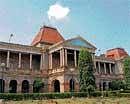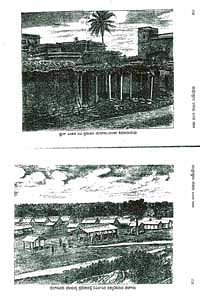

“Avoiding someone like the plague” is a very common idiom in English. This modern expression dates from Latin of the early Middle Ages, when Saint Jerome of 4th century wrote, “Avoid, as you would the plague, a clergyman who is also a man of business.” The plague, a deadly infectious epidemic of his times has taken countless lives across the world and over centuries.
History of plague
Plague is a deadly and infectious disease caused by enterobacteria. It is primarily carried by rodents and spreads to humans through fleas. It wiped out nearly one third to one half of Europe in the mid-14th century. Called ‘Black Death’, it came through the trade route from China to Italy in the 1330s.
The disease receded but never died. Plague outbursts routinely took thousands of lives in London, Italy, Germany and France between mid-16th century and mid-18th century. In India, the first mention of plague was by Emperor Jahangir in 1612 during his daily visits in Agra, according to author Dr Leela in ‘Mysore Samskrithika Sankathana’. She traces other outbreaks in Gujarat (1812-21), Kumaon (1823) and Rajputana (1836).
However the most documented and dreaded outbreak in India was of bubonic plague (1896-1899) that spread terror across Bombay and Calcutta Presidencies, Mysore State, Dharwad and Hyderabad. The British Medical Journal states 36,381 seizures in Bombay, 7,176 in Bangalore and around 36,459 in Dharwad.
Bubonic plague in India
Bubonic plague belongs to the same family of enterobacteria. It attacks the lymphatics and creates swollen lymph nodes (buboes). Its symptoms were first brought to notice to the Bombay Municipal Commissioner in 1896. The bacillus was sent to Calcutta where it was tested and confirmed by Dr Haffkine who also developed the inoculation. A number of checks and processes were put in place by various provinces to avoid spreading of this disease.
In Mysore province, a plague commissioner was appointed. Systems were set up to identify, segregate and take care of the infected patients. Segregation camps were set up outside the city. Inoculation was compulsory. Educating the public about the disease began. Travellers by road or railways from infected areas were first inspected before letting them enter the city.
In a paper released by Epidemiological Society of London, J Spencer, the then Medical officer in Jolarpet, has explained in detail the process of passengers’ inspection at Jolarpet. The Madras Railways had a passport system to check people who arrived from infected areas. All passengers from plague-infested areas would be given, after medical examination, a passport that bound him to appear daily for observation for ten days.
In Bangalore, instead of the passport, the passengers were personally escorted by the police to their houses and were then observed for ten days by the plague authorities. Trains were disinfected thoroughly before further journey. An excerpt from his paper about a normal disinfection process for train passengers suspected of infection. “The usual procedure is to strip the passenger, and to give him a cloth to wrap round his loins.
His clothes and luggage are then disinfected by steam, a thorough and satisfactory method. There are usually articles in his baggage that would not stand this disinfection, so are exposed to the sun for an hour or so.
The passenger himself is conducted to a bathing-shed, and a gallon or so of corrosive sublimate (1-10,000) is poured over him as he squats on the ground, leaving much of his body untouched; and the momentary contact of the disinfecting fluid can do little if anything to the parts of the body it does succeed in reaching. The passenger then receives back his clothes, and he is considered disinfected”.
Inoculation
Though Haffkine’s inoculation was mandatory, not many Indians (natives) participated initially. Western medicine was new and the enormity of such an epidemic was not fully understood. Spencer says that travellers tried every excuse to avoid medical examination and inoculation. One ingenious way was to arrange a telegram a day before he started the journey which said, “Your wife (son, mother etc) died today. Come at once.”
Another was to borrow or buy inoculation certificates. Medicine was transported to every infected region and health camps were setup. Initially the British regiments and educated middle classes were inoculated in public to gain the confidence of the others. As the disease spread quickly, people turned up in large numbers.
And it continued to rage...
In spite of all the precautions, plague struck both the City and Cantonment areas of Bangalore. The first case that occurred was in the Cantonment on August15, 1898. A servant of the railway superintendent, who had arrived from Hubli, died due to plague.
On the following day, plague cases were reported among the coolies who worked in the railway trans-shipping good sheds in the city area. The first few infections occurred in the houses surrounding the good sheds.
It spread quickly aided by the unsanitary conditions and in the dense city areas. The Cantonment too caught it after a second case was reported six weeks later. It quickly went out of control. According to the Plague Commission Report released in 1899, by June 1899, there were 2,665 official and around 3,393 unofficial deaths in the city and 3,321 deaths in the Cantonment.
Reforms
Though the system failed in a way to check the epidemic, health and town planning got a major facelift during this period. Around 1,356 homes in the old city were demolished and around 8,000 homes were disinfected. Roads were widened and proper drainage facilities constructed.
A health officer was appointed for the first time in the City. The Victoria Hospital was inaugurated by Lord Curzon, the then Governor General in 1900. Telephone lines were set up for faster and better communication.
People migrated to the newer extensions that were better planned and spacious. R K Sridhar Murthy, who has authored a book on Malleswaram, explains that both Malleswaram and Basavanagudi had been developed prior to the plague attack.
The layouts were then called the city’s ‘northern and southern extensions’. These extensions were planned in 1889 and progress was made in 1892. It was handed over to Bangalore City’s municipality in 1895.
While the Raja mill workers and some others already inhabited Malleswaram, that the old city’s exodus migrated to these new extensions after the plague is also true. Plague today is officially eradicated but the scars it left shook the city to wake up and improve itself.